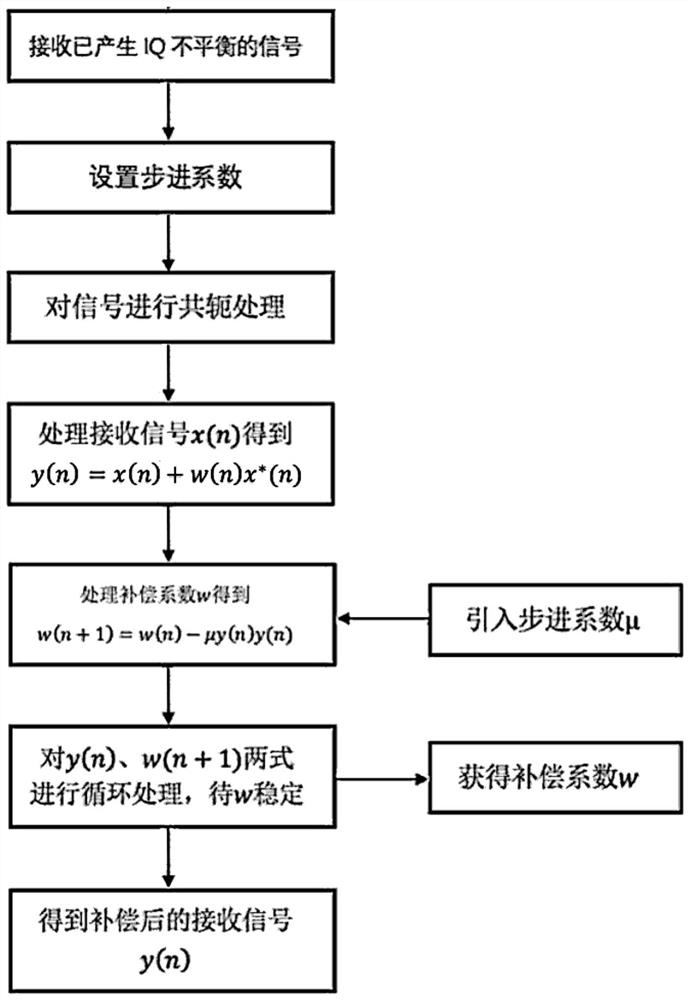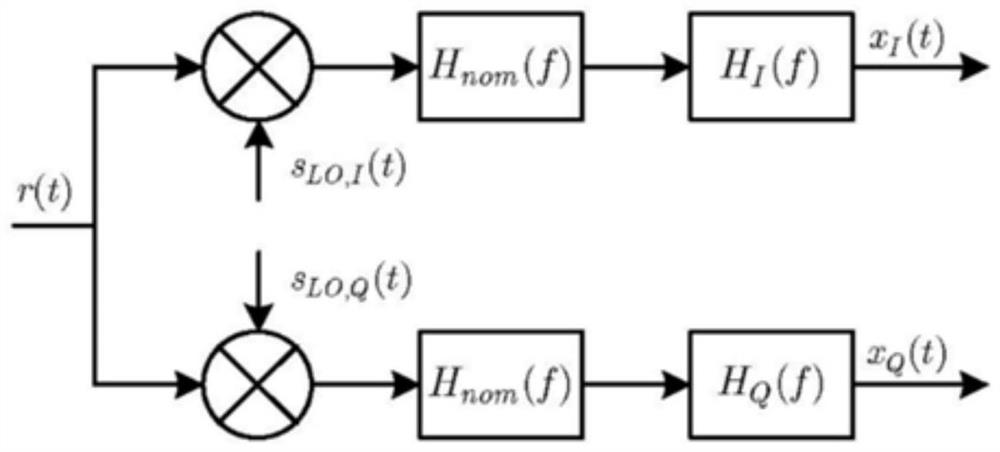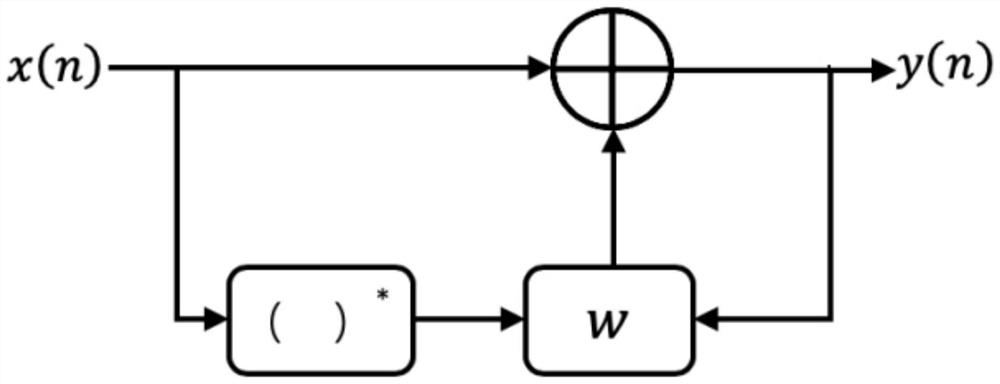A loop-based iq imbalance adaptive blind compensation method and system
A compensation method and compensation system technology, applied in the field of communication, can solve the problems of difficult system adjustment algorithm structure, high cost, high compensation performance, etc., and achieve the effects of reducing compensation cost, improving performance, and strong robustness
- Summary
- Abstract
- Description
- Claims
- Application Information
AI Technical Summary
Problems solved by technology
Method used
Image
Examples
Embodiment 1
[0090] A loop-based adaptive blind compensation method for IQ imbalance, such as figure 1 As shown, it mainly includes:
[0091] Receive the IQ unbalanced signal, set the step coefficient, process the received signal, introduce the step coefficient to obtain the compensation coefficient through cyclic iteration, and then obtain the compensated output signal. The detailed implementation process will be analyzed below.
[0092] figure 2 It is a schematic diagram of signal IQ imbalance, which shows the IQ imbalance generated by the signal due to the influence of non-ideal factors in the process of receiving the signal, where: H nom (f) represents the frequency response of the low-pass filter on the link, H I (f) and H Q (f) respectively represent the frequency responses of the I-way and Q-way carrier signals after they pass through the link and are affected by other non-ideal factors (ideally, H I (f)=H Q (f)=1), g and represent the mismatch magnitude and mismatch phase, ...
Embodiment 2
[0154] A loop-based IQ imbalance adaptive blind compensation system, comprising:
[0155] Receiving module: used to receive the unbalanced signal x(n) through the two channels of I and Q, and intercept the discrete signal of a certain length.
[0156] Fixed-point processing module: for performing fixed-point processing on the received signal x(n).
[0157] Setting module: used to set the step factor. In the process of setting the step coefficient of the setting module: set the initial step coefficient to be relatively large, perform rough calibration, and after processing a certain amount of data, set a smaller step coefficient to perform fine calibration.
[0158] Conjugate module: used to conjugate the received signal x(n) to obtain x * (n).
[0159] Compensation module: used to process the received signal x(n) to obtain the compensated output signal y(n)=x(n)+w(n)x * (n), where w(n) is the compensation coefficient;
[0160] Loop module: used to introduce the step coeff...
PUM
 Login to View More
Login to View More Abstract
Description
Claims
Application Information
 Login to View More
Login to View More - R&D
- Intellectual Property
- Life Sciences
- Materials
- Tech Scout
- Unparalleled Data Quality
- Higher Quality Content
- 60% Fewer Hallucinations
Browse by: Latest US Patents, China's latest patents, Technical Efficacy Thesaurus, Application Domain, Technology Topic, Popular Technical Reports.
© 2025 PatSnap. All rights reserved.Legal|Privacy policy|Modern Slavery Act Transparency Statement|Sitemap|About US| Contact US: help@patsnap.com



